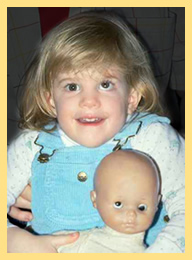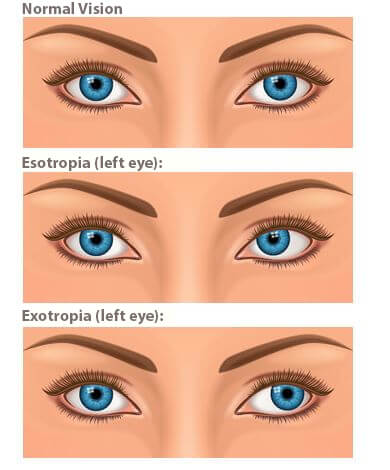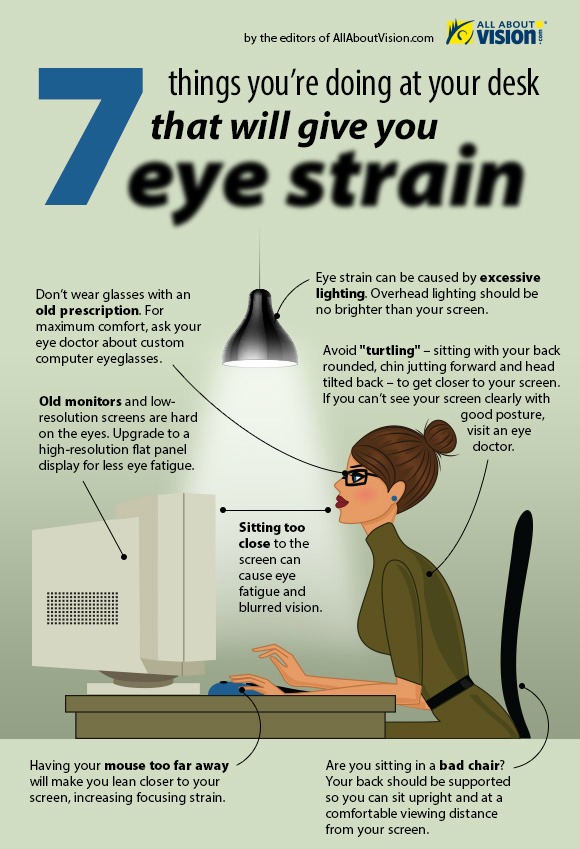Computer Vision Syndrome Eye Muscle Surgery Strabismus Vision Therapy
Double Vision
If you start seeing double images when your eyes normally work well together, you should take it seriously. Double vision (also called diplopia) can be caused by a variety of problems from simple things, like a change needed in your glasses, to very serious medical problems. It is important to determine the cause of double vision if you are experiencing it.
Some of the causes of double vision are:
- Refractive error – the need for new glasses
- Corneal irregularities – medical conditions like keratoconus and corneal dystrophies
- Severe dry eyes – such as in Sjogren’s syndrome can cause ghost images due to insufficient or poor-quality tears
- Cataracts – a clouding of the eye’s natural lens
- Cranial nerve palsies – that occur in conditions like diabetes, head injuries, multiple sclerosis, myasthenia or with high blood pressure, tumor, stroke, or an aneurysm
It’s important to determine the cause of the double vision as soon as possible as some conditions can be life-threatening. Our doctors will do a thorough examination to diagnose the cause of your double vision and initiate treatment if needed.
Computer Vision Syndrome
 People who sit in front of a computer for long periods of time often complain of a variety of uncomfortable symptoms.
People who sit in front of a computer for long periods of time often complain of a variety of uncomfortable symptoms.
According to the American Optometric Association, computer eye strain affects more than 70 percent of Americans who work on a computer on a daily basis.
What are the Symptoms of Computer Vision Syndrome?
- Dry eye
- Tired eyes
- Headaches
- Red eyes
- Double vision
- Blurred vision
- Neck strain
- Backaches
What Can I Do?
If you are experiencing any of the above symptoms, you should schedule an appointment with one of our optometrists or ophthalmologists. We specialize in comprehensive eye care and will perform tests to detect any possible vision problems.
In some cases, computer eyeglasses may be prescribed to help you work more comfortably.
Eye Muscle Surgery
 Strabismus (misalignment of the eyes) is a common condition, especially in childhood, and occurs in about 1 in every 4 children. Early detection and treatment of strabismus are essential to prevent permanent visual impairment.
Strabismus (misalignment of the eyes) is a common condition, especially in childhood, and occurs in about 1 in every 4 children. Early detection and treatment of strabismus are essential to prevent permanent visual impairment.
If strabismus is detected, corrective treatment can sometimes be attained by nonsurgical methods, occlusion therapy, patching, and prescription eyeglasses. However, if these methods fail to properly align the eyes, eye muscle surgery may be recommended.
Although the strabismus surgeon in practice uses a wide variety of surgical techniques to correct strabismus, the most common procedures are weakening or strengthening of the action of the muscle.
Depending on the magnitude of the eye deviation, the procedure may be performed on one or both eyes, which keeps the movements of the eyes as normal as possible. Strabismus surgery is generally effective in correcting ocular misalignment, especially when it is performed early enough to allow the brain to use the eyes together and develop a 3-dimensional vision.
While the idea of eye muscle surgery can be alarming to some parents, both the procedure and the recovery time are relatively quick. Of children with strabismus, 30% – 50% will develop secondary visual loss, or amblyopia, if it goes untreated.
Restoration of proper alignment of the eyes must occur at an early stage of visual development to allow children the chance to develop normal binocular vision.
Our experienced strabismus surgeon, Dr. Judith Lavrich, will evaluate your child’s ocular mobility and work with you to achieve the best vision and ocular alignment possible.
STRABISMUS
Strabismus, or misalignment of the eyes, is a common condition encountered in the 4% of the US population. Early detection and treatment of strabismus are essential to prevent permanent visual impairment in children. In adults misalignment of the eyes can indicate a serious medical condition.
The most common type of strabismus is esotropia or an inward turning of the eye. This typically occurs around age 2 to 3 when a child is learning to focus. Many times this can be corrected with glasses, but in other cases, surgical correction may be needed.
The second most common type of strabismus is exotropia or an outward turning eye. This normally occurs when the patient is focusing on objects at a distance.
This may occur intermittently, especially when tired or daydreaming. There are several treatment options depending on the severity of the problem. Vision Therapy or Orthoptic Therapy is frequently used for this type of strabismus.

As the Director of Pediatric Ophthalmology and Adult Strabismus at Total Eye Care, Dr. Judith Lavrich treats children and adults with double vision, turning of the eyes, and eye movement disorders.
She has extensive experience in medical and surgical correction of misaligned eyes in adults and children and has been sought out for her proficiency in this area.
Vision Therapy is an Effective Treatment
Vision therapy, also known as orthoptic therapy, is a highly effective non-surgical treatment for many common eye movement disorders including convergence insufficiency, intermittent exotropia, accommodative insufficiency, and many others that cause difficulties with reading, double vision, crossed eyes, and trouble learning.
Vision therapy is not just eye exercises. The goal is not to strengthen the eye muscles as they are already incredibly strong, one of the strongest muscles in your body. Vision therapy is a type of physical therapy for the eyes and brain that increases the brain’s coordination of eye movements.
This allows the patient to achieve a better function of the eyes’ alignment and focus. Although many of the eye movement disorders that are helped by vision therapy are common, unfortunately, many practitioners are not familiar with vision therapy and its effectiveness.
For certain eye movement abnormalities, orthoptic therapy has been proven effective in scientific literature. In reading disorders and learning disabilities, vision therapy is specifically directed toward resolving the eye movement problems which interfere with reading and learning if they are present.
Vision therapy is:
- a progressive program of eye-brain exercises performed under a doctor’s supervision
- customized to fit the individual visual needs of each patient
- the exercises are done at home approximately 10 minutes per day, 4-5 times per week
The first step in any Vision Therapy program is a comprehensive vision examination to determine if there is an eye movement problem. If there is, our doctors can advise you as to whether Vision Therapy would be an appropriate treatment.














